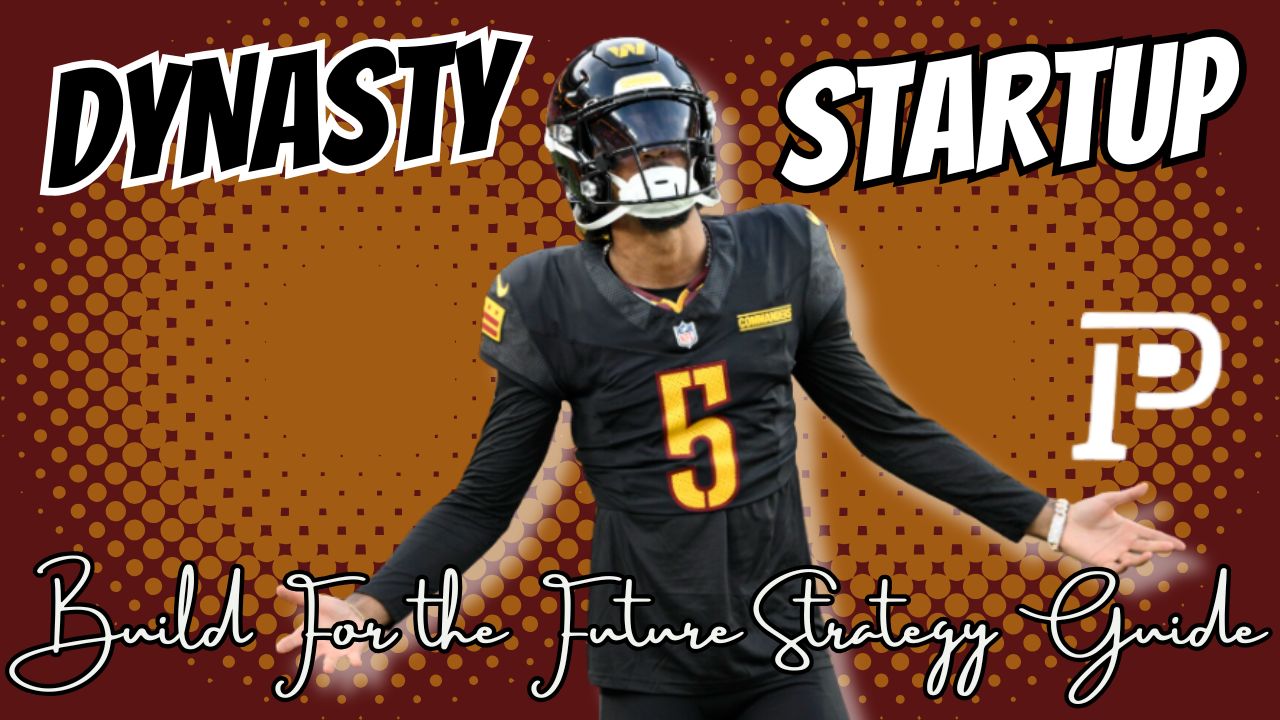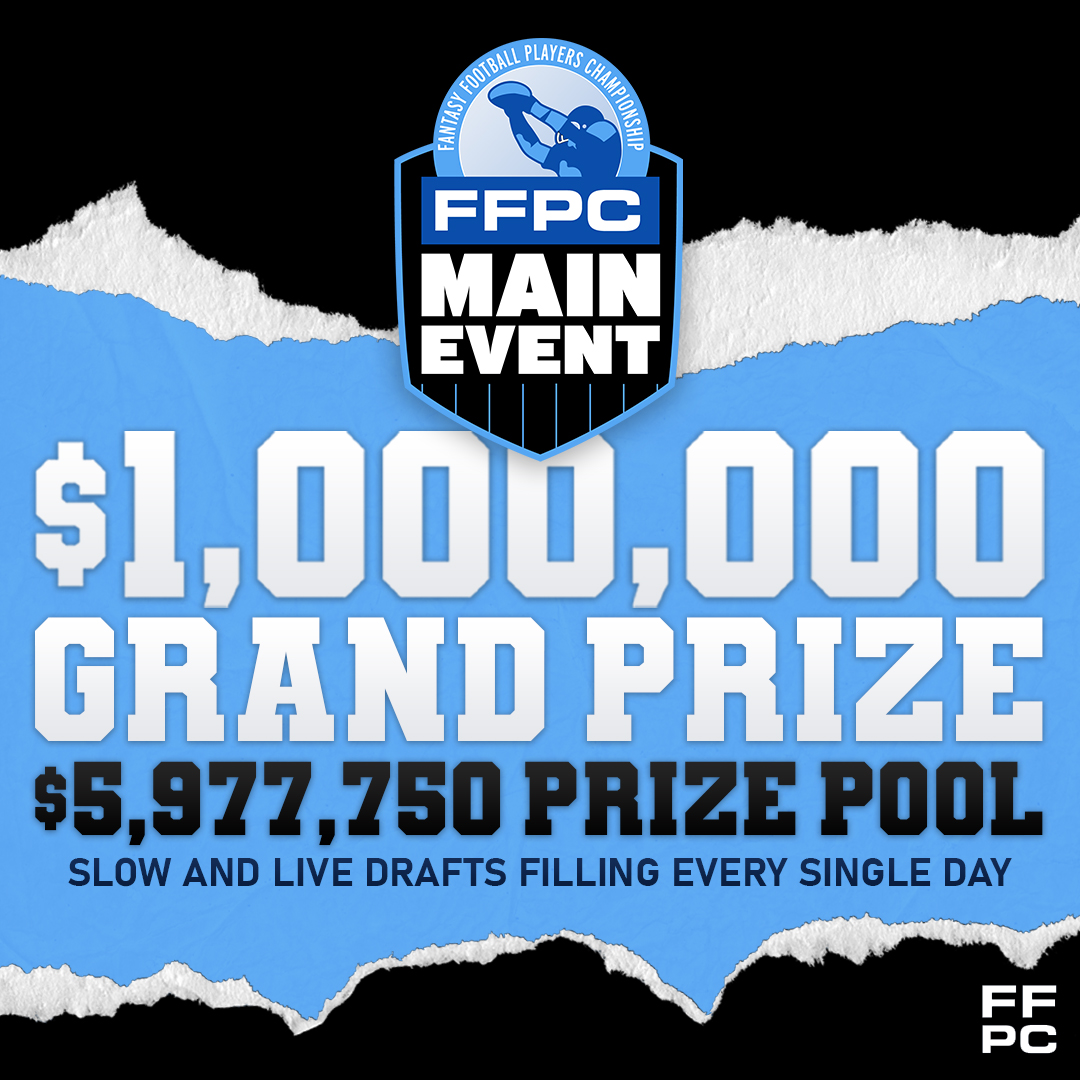PlayerProfiler is home to award-winning dynasty rankings and tools. Our Dynasty Deluxe package includes complete Dynasty Rankings, Rookie Rankings, Trade Analyzer, Draft Planner, Mock Drafts, and more. Check it out. Aaron St. Denis presents Dynasty Football Startup Strategy (Build For the Future. This three-part series will discuss tips and tricks for various draft strategies.
Also, check out Part 1, Win Now.
Remember that this energy can quickly fade despite your league mates’ enthusiasm during the startup draft. Too many fantasy managers get wrapped up in “tanking” and “building to win for the next five years”. While this idea seems like a good one, the average dynasty league lasts three years. There is no definitive number, but it’s believed that between 25 and 35 percent of dynasty startup leagues fold after the first season. It’s best not to think too far down the road for a league that may not exist by the time your squad is competitive.
As the NFL Draft approaches, we are only weeks away from kicking off Dynasty Startup Season. All of the silent managers who sat dormant for the offseason will suddenly spring back to life. This is “Rookie Fever” season. With this in mind, it’s important to have a game plan in mind when preparing for your dynasty startup drafts. You can get by “wingin’ it” for redraft leagues, but being unprepared can leave your roster in shambles in dynasty.
One Opening Thought
Regardless of which dynasty football startup strategy you choose to go with, there is one rule that should be adhered to. That rule is to draft for value and trade for need. Many times, managers can panic in a startup draft and overpay for a player because they are lacking in this position. This is commonly seen with tight ends and quarterbacks (in superflex). Instead of falling into this trap, simply draft the best player available. After the draft, fill the holes in your roster later from a position of immense strength.
Dynasty Startup Strategy (Build For the Future)
Target Young, High Upside Wide Receivers
Focus on rookies or second-year receivers with strong draft capital and promising situations. These players often have lower initial costs (in terms of draft position) but can grow into cornerstones. Justin Jefferson was a first-round pick in the 2020 NFL Draft. He went off the board as WR6 in rookie drafts. He could be had in startup drafts in the middle rounds that year. A value that would only climb to the point we see today.
The longevity of wide receivers is far greater than that of running backs. Therefor,e a team that intends on building for the future is much better off stockpiling young receivers over young running backs with the average career of an NFL running back at three years. A high-end running back can be untouchable one day and worthless the next. Todd Gurley, James Robinson, and Leonard Fournette are prime examples of RB1s who quickly found themselves as waiver-wire fodder. Meanwhile, we see wide receivers like Davante Adams, Stefon Diggs, and Cooper Kupp, who will still bring in a solid return in trade well after their best days are behind them.
Fade Running Backs
This strategy piggybacks on the above strategy but with a slight tweak. It factors in age slightly more. The key thing about handling running backs in a long-term build is that age matters more to you than value. In a startup draft, you should be passing on aging running backs like Alvin Kamara and Derrick Henry. They are going to go in the early rounds and should instead be taking shots later on in the draft on young running backs.
If you do find yourself with players like Henry or Kamara, it is important to cash out quickly and ship them off while they are still valuable. A great way to do this is to trade one of them away for a combo package of a young player with high upside that you believe is undervalued, paired with an early rookie pick. This gives you the potential to land two solid players in a year instead of the veteran who may see their value fall off a cliff during the season.
The converse to fading aging running backs is to stockpile and flip cheap running backs. My favorite dynasty strategy is to have multiple third and fourth-round picks that I can use to draft Day 3 running backs. Leave those players on your taxi squad, and then flip them to contending teams the second an injury happens, and they see a spike in value. It’s important to remember that an overwhelming majority of Day 3 running backs will have a breakout season and fail to ever reach that level again. Players like James Robinson, Tyler Allgeier, and Dameon Pierce are great examples of low-cost running backs you could have invested in and then sold off quickly before their fantasy value plummeted.
Target Young Quarterbacks (Superflex Leagues)
This goes without saying in almost all Superflex leagues, but let’s say it anyway. The most precious assets in Superflex leagues are quarterbacks. For this reason, a good strategy is to take multiple shots on young quarterbacks. Over the past decade, we have seen the likes of Josh Allen, Lamar Jackson, and Jayden Daniels go from mediocre value to almost unlimited value in the span of a season. When these young quarterback prospects hit, they are worth more than any two position players combined, even more so when they are dual-threat quarterbacks.
All it takes is a shrewd quarterback pick or two to give you a massive edge in your dynasty league. Imagine a scenario in which you loaded up on high-upside receivers early in your draft and hit later on a quarterback like Lamar Jackson. It takes what looked like a solid team at the time you drafted it and turns it into a juggernaut for years to come. Quarterbacks have the longest shelf life and highest positional value in a dynasty, making them a foundational piece for future success.
Turn Veterans Into Draft Capital
This is a combination of the three previous strategies. It’s not uncommon to hear fantasy managers saying their team will “dominate for the next 5-10 years”. This is usually not the case. The average shelf-life for a dynasty roster is 3-4 years. In that time a great amount of unexpected change and turnover can occur. Players get injured, they hit age cliffs, or they lose their jobs to young stars. This is why leaving that big-name stud on your roster can go bad quickly when building for the long run.
Christian McCaffrey, Travis Kelce, and Aaron Rodgers may have seemed like studs whose values would never go down only a few years ago, but since then, we have seen all three of them plummet in value. McCaffrey has struggled with injuries, Kelce is an ever-present threat to retire, and Rodgers has been injured and contemplating retirement. Only a few seasons ago, you could have traded away these three players and gotten an entire starting lineup back in return. Fast forward to 2025, and you are unlikely to get any valuable players for them unless you are willing to take another aging asset.
Veterans should be treated like hand grenades. Hold them while you are in win-now mode, but make sure they are in someone else’s hand when they blow up because they all blow up eventually. The unknown upside and “Fear of Missing Out” are what drive prices up in dynasty leagues. Once this FOMO fades, the player’s value will flatline.
Leverage Rookie Fever
The words in the paragraph above are the most important part of “Rookie Fever”. After the NFL Draft, these rookies will all have their landing spots and draft capital settled, and while a few of them will fall right off the board because of nightmare scenarios, the majority of them will see the hype train begin to motor.
Right now, every fantasy manager is combing through sleeper lists in search of the next Puka Nacua or Austin Ekeler. This phenomenon is exactly why casinos and lotteries are so profitable; selling people dreams of limitless wealth and potential makes you rich. Why keep all those draft picks that are a toss-up to hit most of the time when you can trade them away for a more valuable player? It’s amazing how many times a manager will trade away a WR2 for a draft pick in the hopes of that pick turning into something. In the end, that pick could turn into anything; it could even turn into a WR2.
If you need a perfect way to sum up “Rookie Fever”, check out this YouTube clip that explains it perfectly.
Fantasy managers are more than willing to trade away a cow for magic beans just because the cow no longer has the upside to be the number one overall player. So, why not take them up on the offer?
One Final Thought
It’s worth noting that the most important part of managing a dynasty roster is honest self-evaluation. Only you can decide when it’s time to push your chips all in and go for a championship. With that in mind, this build features lots of young players early on in the build. As you approach the point where you are ready to contend, it is important to layer your roster. A roster full of “high upside” rookie players can be mesmerizing. However, most championship rosters feature a mix of veterans and youth. Keep the youthful players that you like best, and trade away some of the other youngsters for proven veterans once it’s time to go for it.
Aaron St. Denis is a fantasy football contributor for PlayerProfiler. Find him on Twitter @FFMadScientist for more fantasy content or to ask questions.








